WASART was contacted about a mule that was trapped in a knee deep mud hole in the middle of a field and was unable to self rescue. WASART’s Technical Rescue Team and equipment truck deployed to the scene.
On arrival, we assessed the situation. There were muddy conditions in the pasture, including thick mud and clay, creating footing issues and multiple sinkholes. We were especially concerned about the suction of the mud we’d be dealing with, and responder safety when operating around the animal in the deep mud. We placed strips of plywood around the mule to provide a walking and working platform. The veterinarian and other non-team members were offered helmets. We made a plan for the extrication and got to work.
We divided into teams with assigned tasks. One team set up a haul system on the dorsal side of the mule with a tractor being an anchor point. A second team set up the tripod in a nearby area on stable ground. A third team, tasked with mule rigging, created a strategy to extract he mule from the thick mud and clay using two rescue straps and performing a sideways drag.
In order to move the mule while avoiding injury, and effectively utilizing the compressed air lance (a tool used to loosen the mud surrounding a trapped animal or person during a mud rescue), the thick clay mud needed to be turned to a waterier consistency. We removed clumps of thick mud to make the area surrounding the mule more workable. We then used a Nicopolous Needle (a circular metal tube used to pass a line of webbing or rope under an animal stuck in the mud), to guide the rescue straps under the mule’s abdomen. Next, we added warm water to the legs and tail area to make a waterier consistency which allowed the mud lances to aerate the mud, breaking the suction around the legs while the haul team completed a sideways drag to remove the mule.
Once the mule was out, it made several unsuccessful attempts to stand. We used a forward assist to move the mule from the hole and onto more solid ground. After several more unsuccessful attempts to stand, it was decided to sedate the mule. After sedation, the mule was placed onto the rescue glide and moved to the location of the tripod for raising. A tractor was initially used to pull the mule and rescue glide away from the muddy area and then WASART members dragged the glide the rest of the way to the tripod. At this point, the mule was able to shakily stand up under its own power, without needing the tripod, and was carefully walked to promote circulation and warmth. We used blankets and towels to clean and dry the mule as much as possible. While standing, the mule ate and drank, which were good signs. After about 30 minutes of walking, cleaning, drying, eating, and drinking the mule was steady on its feet and placed into a nearby stall.
The team cleaned and packed up gear, debriefed, and headed home in the early morning hours.
Thanks to all of our members who responded to the call and to the mule owner for reaching out for help.
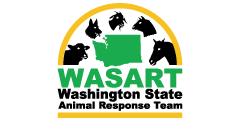
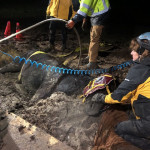
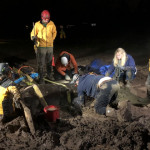
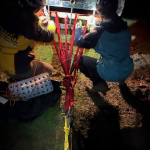
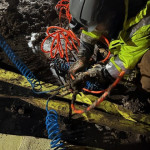
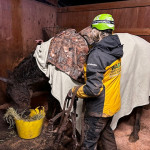
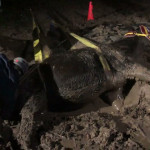
 Pogo, Dog Down Steep Hillside Over Puyallup River
Pogo, Dog Down Steep Hillside Over Puyallup River